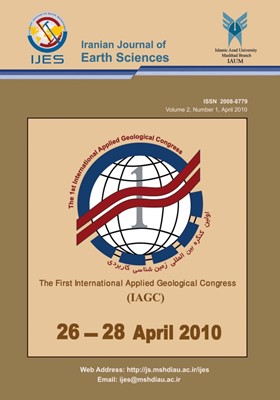Comparison of bauxite resources – geo-economical considerations
الموضوعات :G. Komlóssy 1 , W. B. Morrison 2
1 - Geo-Kom Geological Exploration Ltd. Vércse u. 23, Budapest – Hungary H-1124
2 - William B. Morrison and Assoc. 3115 Bayo Vista, Alamaeda CA – 94501 USA
الکلمات المفتاحية: World bauxite resources, Exploration data reliability and comparability, New bauxite resources, Geographic locations,
ملخص المقالة :
In order to meet the significantly increased metal demand of the world market, it has been decided to expand the capacity of the existing alumina refineries and to set up new plants (more than 2 Mt/a each). The selection among the bauxite sources is based on previous exploration data, such as: tonnage, grade, mineralogy, etc., the geographical position of the deposit, existing natural and constructed infrastructure and the distance from deep water ports. Environmental and political risks are also investigated. Decision making is a complex task in which the close co-operation of professionals of the bauxite-alumina industry is needed. The authors specify the most determinant factors which are investigated for decision making and call attention to the fact that, in many cases, inconsistent data are compared as if they were equal in value or identical such as: the reliability of explorations made for deposits in various countries, and at different times is also different, the methods applied in reserve calculation and resource estimate are different, the qualitative criteria used for commercial grade ores are different, no numeric data are available showing the possible error in reserve calculation the terminology used for bauxite categories is also different.Adequate attention is never given for the further development of possible prospects; their investigation may be neglected in the selection. As a consequence, when different resources are compared, the geological risks (stability in bauxite production) cannot adequately be taken into account. For minimizing the transport costs (either the bauxite supply to the alumina plant or the alumina shipping to the smelter or both) the geographical position of the raw material is one of the most significant economic factors in the value of the deposit. There are several regions in the world which are so rich in bauxite potential (West Africa, edge of the Guyana Shield in Venezuela and Brazil, the Amazon Basin in Brazil, Weipa Gove in Australia, Eastern Ghats in India, etc.) where new deposits should be explored as a function of their geographical position. The landsat interpretation has proved to be an excellent tool for establishing priorities among the options. The authors give a short review and comparison of the most significant regions and deposits focusing their interests on the: tonnage, grade and mineralogy, further prospects (undiscovered) deposits, infrastructure, distance from mine/deposits to the deep water ports, available alumina content (for a low or a high temperature procedure) for estimating the bauxite consumption per ton of alumina, soluble silica content for estimating the caustic soda consumption per ton of alumina, beneficiation cost in some cases, risk factors (geological, environmental, political and national) The authors conclude, that in spite of the fact that about 30 - 35 billion tons of bauxite have been registered so far as proved + probable reserves and a further 55 – 60 billion tons can be estimated as possible resources in the world, finding new resources in better geographical locations and their exploration may be advantageous. The new exploration data must be more reliable, as well. The costs of reconnaissance and exploration may be far below the haulage costs.


